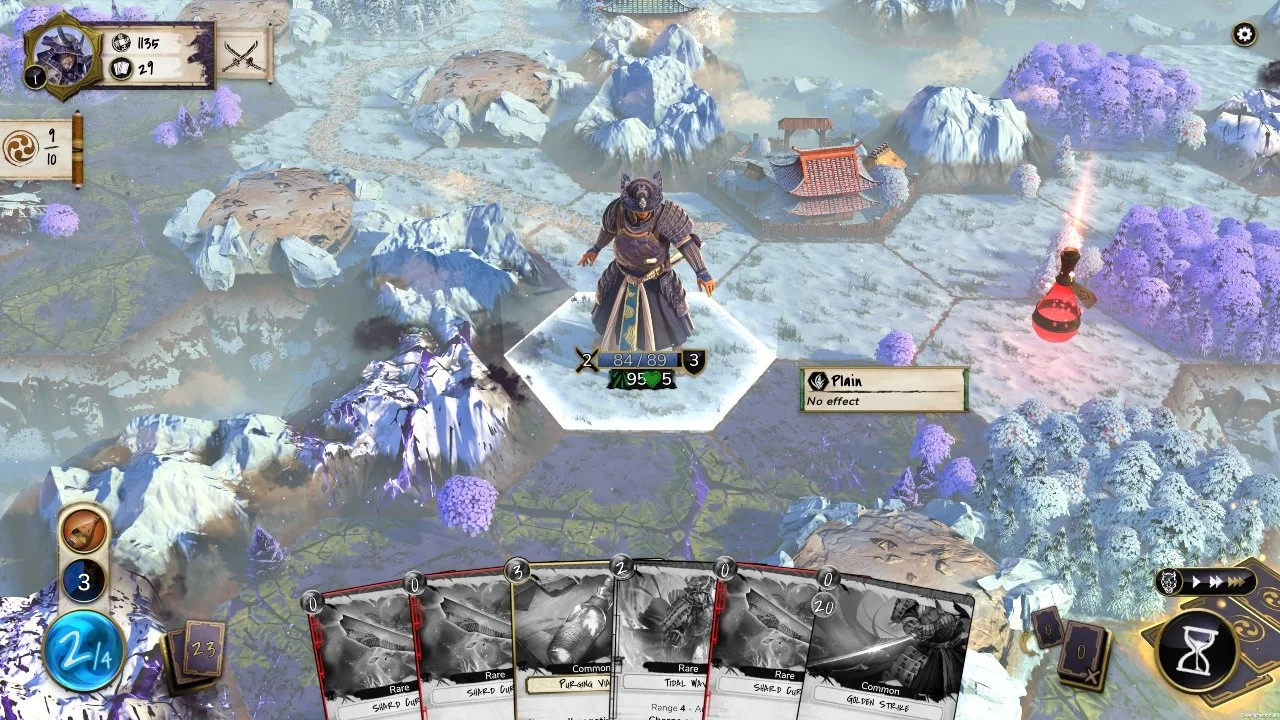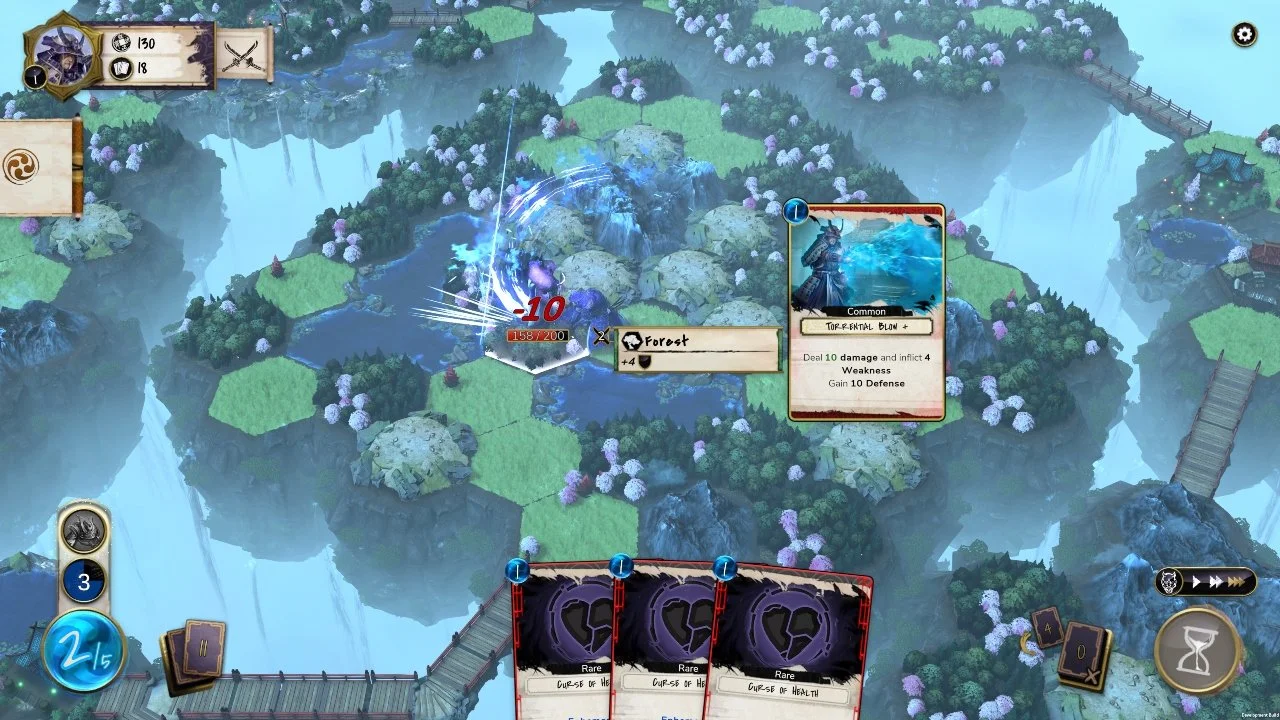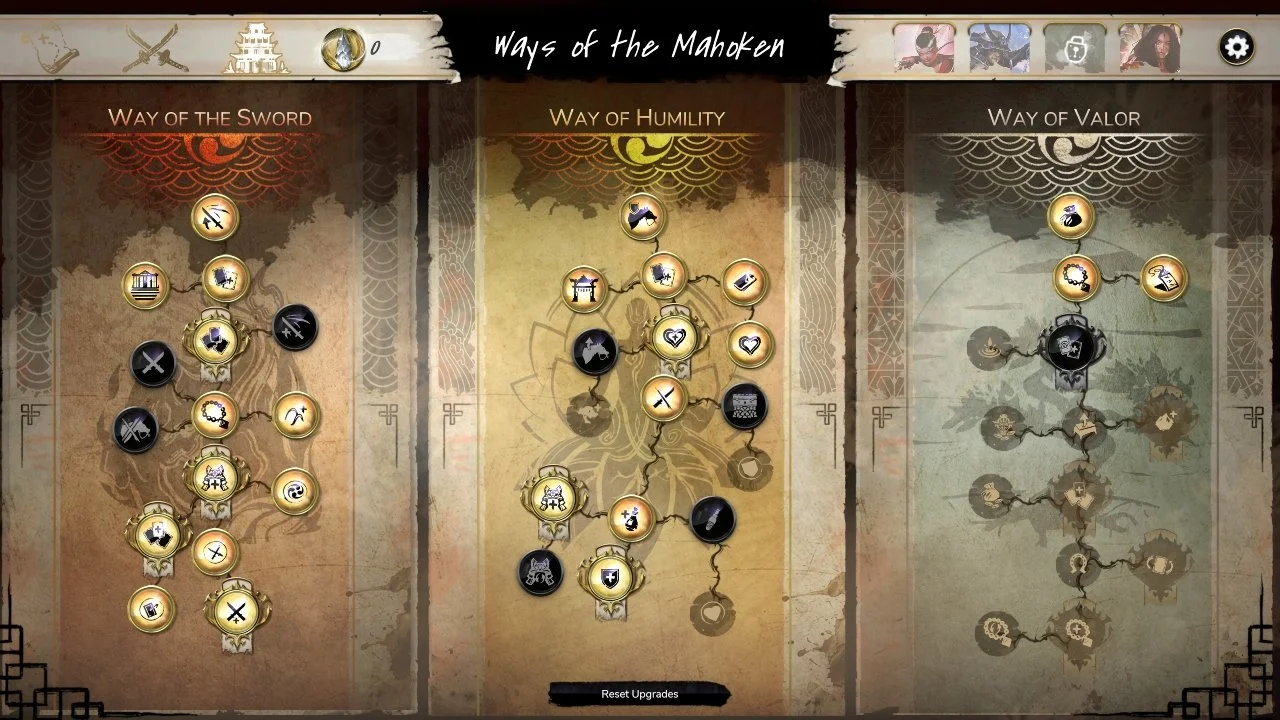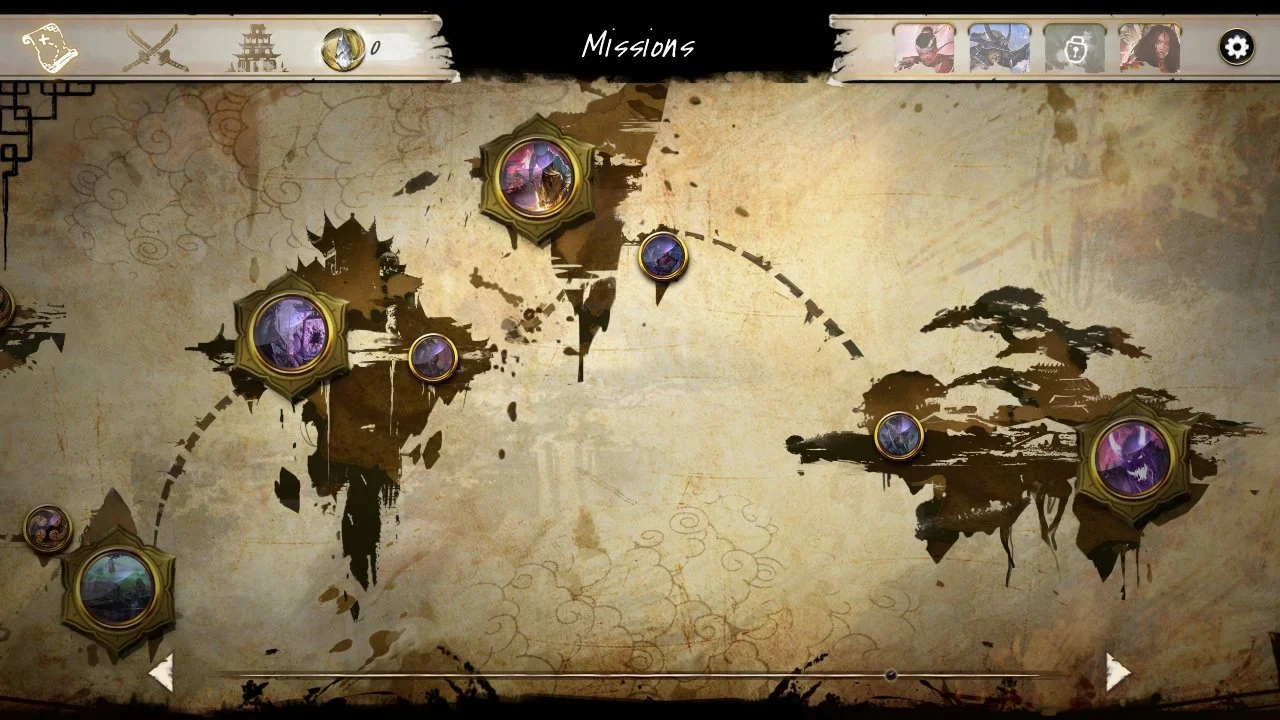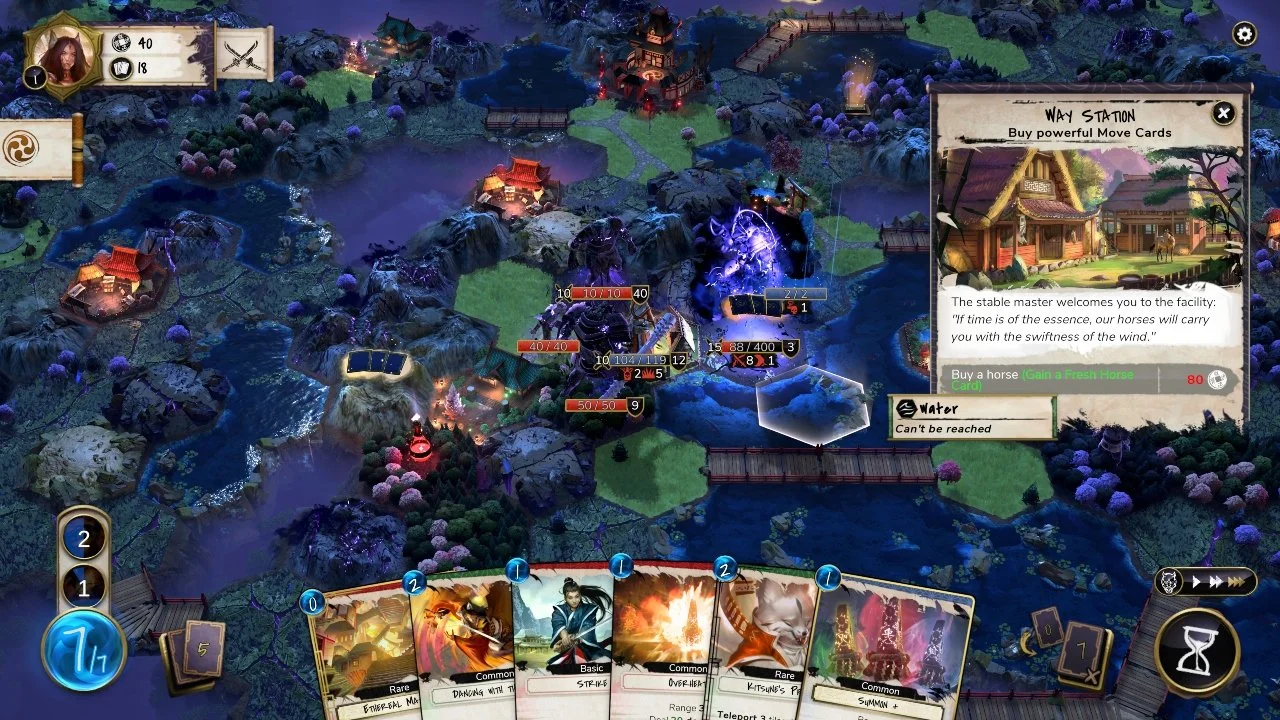PC Review Code Provided by Iceberg Interactive
Mahokenshi is the new flagship entry from indie developers Game Source Studio working with publisher Iceberg Interactive. Mahokenshi is a beautiful, turn-based strategy RPG adventure through a fantastical world based on Japanese mythology. Players will adventure as 4 different playable samurai characters that have varying styles of play. In combat, players will travel across the battlefield building a deck of cards, drawing a certain amount to use in turn-based combat. Mahokenshi tells a brief yet entertaining story through short cutscenes and striking visuals, so let's jump right in.
Story
The story of Mahokenshi very much serves as a scaffold for the game’s breathtaking visuals and compelling combat system. Mahokenshi’s story is predominantly told through animated cutscenes at the beginning of each mission and is by and large relatively simple.
Evil forces, from Oni, to goblins, to sorcerers, have come and are corrupting the land, as Mahokenshi, samurai tied to various Kami, your goal is to stop them, defined the land, and cleanse their taint from it. As a side note, while I enjoyed my experience with Mahokenshi more due to my general, if basic, knowledge of Japanese mythology, having that knowledge isn’t required to enjoy or understand the story.
Aside from the cutscenes themselves, Mahokenshi relies heavily on visual storytelling, making excellent use of their beautifully detailed maps, art, character models, and effects. Playing Mahokenshi isn’t a heavily story-focused experience, but it is marvelous to immerse yourself in the stunningly beautiful aesthetics of the world.
Gameplay
Mahokenshi’s biggest claim to fame is its unique gameplay system. You begin by selecting one of the various story or side quest missions from the world map, from there you decide which Mahokenshi to play as, and then you start the mission. Every mission has its own unique map that always starts the same, however, every time you play a mission you will have a different experience! This is due to the deckbuilding mechanics of Mahokenshi.
Every mission begins with the same deck of five-ish basic cards (depending on upgrade trees) that you will build from there by finding or buying new cards to add to your deck. Each individual Mahokenshi has their own style of play and respective card pool to draw from. Ayaka from the House of Ruby, has cards that center around trading health for strength, gaining flight, dashing, and dishing out damage. Kaito from the House of Sapphire, is the tank, he gets cards focused on armor, taunting enemies, return damage, and charging enemies. Misaki is from the House of Topaz, and her cards are themed around warding and spirits. Misaki’s cards let her teleport, debuff enemies, summon wards and spirits, and do loads of damage at the cost of losing the card used. Last is Sota from the House of Jade, his cards are tied to traps and tricks, he can dash, lave traps, and poison enemies.
While you explore the map for each mission you do so in a classic turn-based strategy style. Each turn your character has a certain amount of energy to use on cards or to move across the map. Each different type of terrain costs different amounts of energy to cross, so you need to plan how you use it. A huge part of gameplay is managing the ratio of movement to attack cards in your deck, because many missions have a ticking clock element, and movement cards can cross terrain more efficiently than normal travel; you will need to use them to not only position yourself for fights but to also get to point X before event Y happens.
Also as the story progresses corrupted land appears which causes a nasty debuff if you let it get out of hand. As a final note, after each mission, you will receive shards based on how many challenges you completed in the mission, these shards are used to progress down the different upgrade trees you have available. You can also reset these trees at any time, which is a great way to tailor them to specific Mahokenshi and specific missions.
Audio And Visuals
The audio quality of Mahokenshi is excellent if simple. Throughout your adventure in Mahokenshi, you are accompanied by music that makes you feel as if you’re in a classic samurai movie. The peaceful yet twangy sounds of strings from the shamisen or koto are accompanied by the familiar beats of the taiko drums. The music also transitions from calm to tension-filled when you start a fight. While the score fits the game's theme incredibly it is rather limited with not many different songs or motions.
When it comes down to it though, the dazzlingly beautiful visuals of Mahokenshi are what really grab the attention. From beautifully drawn art for UI and cards, to incredibly detailed maps and character models, Mahokenshi is a delight to look at and play. Each map is a work of art, not to mention the detail paid to individual tiles. This is not even mentioning the wide variety of stylish animations and particle effects when you play different cards. Where the audio lacks, the visuals really pick up the slack in Mahokenshi.
Replayability
This is something I’ve thought about when it comes to Mahokenshi, and while the deckbuilding aspect may seem to lend itself to some amazing replayability, the limited maps and missions available limit the replayability value a lot. I have this image in my head of what an amazing experience it would be if Mahokenshi included a roguelike randomized map generation system, but it’s not there. I can only hope for DLC or a mod in that case.
On the other hand, I can see Mahokenshi being very popular in the speedrunning community. Each mission and each challenge in a mission lends itself to being speedrun magnificently with all the different goals available, the randomized deckbuilding aspect just adds to the challenge. Overall, I can see the possibility of some pretty cool DLC or community mods from the workshop, but until then replayability is around a six out of ten.
What It Could Have Done Better
While Mahokenshi is a fantastic experience there are a few things it could have done better. To start the frame rate can be a bit slow at times and there were a few glitches but nothing game breaking, or anything that made it annoying to play. I also wish the game was a bit longer and had some more replayability. In addition at times, the difficulty level for missions can vary wildly if you don’t know what you’re doing, and a run-through of a mission can be ruined by letting the debuffs stack too high. It would have been awesome to have a difficulty selection option at the start as well as a post-game hell mode, which would have added a ton of replayability to the game. In general, Mahokenshi could do with some more content.
Verdict
Mahokenshi is a breathtaking journey through a world of Japanese mythology, filled will mysterious Kami and deadly Oni! The combat system is enticing and addictive with tons of different playstyles available. Mahokenshi is an incredible first entry for an indie studio and while it’s rather short at around 10 hours to finish with about twice that to 100%, it's still an enjoyable experience. Is it worth $25 though? That's the question.
I would say for the die-hard deckbuilding or turn-based strategy fans it's definitely worth the price tag, otherwise, for the general populace I would wait until it goes on sale or until some awesome mods or DLC come out. Overall I recommend Mahokenshi for fans of strategy or Japanese mythology.
Mahokenshi is available on PC via Steam.
